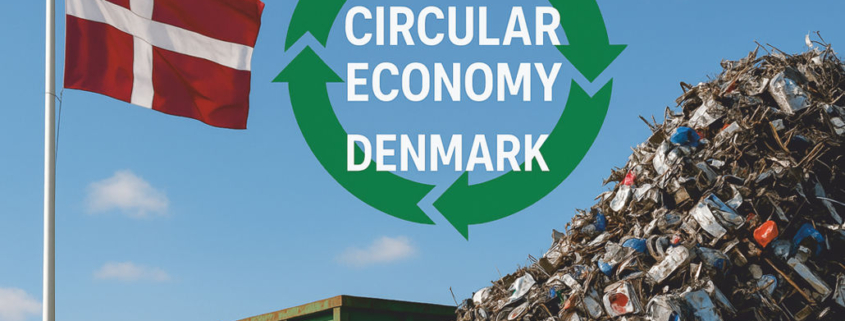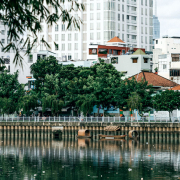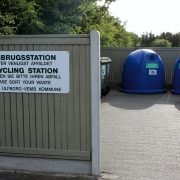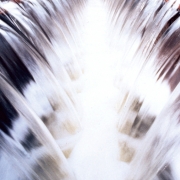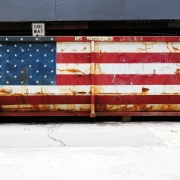Denmark Is Looking for Solutions, Partnerships, and Projects
“Denmark is committed to the EU targets to increase recycling of municipal waste to 55 percent in 2025, 60 percent in 2030, and 65 percent in 2035”, says an Action Plan for Circular Economy edited by the Ministry of Environment of Denmark in 2021.
That seems questionable since the Circularity Gap Report on Denmark revealed a very high material consumption in 2023 – 24.5 tons of virgin materials per person per year, compared to the European average of 17.8 tons per capita. The European Environment Agency computed a waste generation of 814 kg in 2020, compared to the European average of 517 kg per capita. So, how will Denmark reach its self-defined targets?
Danish waste is delivered by four sources, which are nearly equally distributed: building and construction, households, power stations, sewage treatment plants, and incineration plants, as well as Industry and – by eight percent – trade, offices, and institutions. Landfill sites, incineration plants, and Kommunekemi, the main plant for hazardous waste disposal, are all owned or controlled by public authorities.
In one waste system
In 2022, the Danish waste totaled 12.2 million tons and was composed of 3.2 million tons of household waste and 9.0 million tons of industry waste, the latter mostly comprised nearly 4.0 million tons of construction waste. Figures for 2015 showed that mixed construction waste made up 28 percent, mixed municipal waste 13 percent, waste suited for incineration 12 percent, and biodegradable waste ten percent. Recyclable materials were metals (eight percent), paper and cardboard (six percent), wood (four percent), electronics and batteries (one percent) as well as plastic and tires (one percent). Hazardous waste amounting to 88,000 tons was produced by oil refineries and the manufacture of chemicals and pharmaceuticals. Unlike other countries, Denmark has chosen to handle household and industrial waste, including packaging and hazardous waste, in one waste system.
More exports than imports
The official Danish Affaldsstatistik gave account, that in 2022 recycling and recovering of Danish waste added to 9.017 million tons or 74 percent of all waste. 2.742 million tons or 22 percent were incinerated, while 430,817 tons equaling four percent ended at landfills. The Circularity Report on Denmark, edited in August 2023, spoke of around 46 percent ‘technically’ recycled, 22 percent incinerated, two percent landfilled and the remaining 30 percent of waste treated in wastewater treatment plants or spread on land. According to the World Bank, Denmark in total exported waste and scrap, stainless steel with a value of 86.494 million US-Dollar. Altogether Denmark exports 1.9 to 2.4 million tons of waste and thus much more recyclable waste than imports of 0.6 to 1 million tons, says the Circularity Report.
A path dependency effect
It must be taken into account, that there is a difference between the treatment of total waste and household waste – with impacts on the recycling rate. While waste in general is incinerated by 25 percent, household waste is burned by 46 percent. Although these high rates are “a hallmark feature of the Danish waste system”, incineration “is on the verge of becoming unfashionable”, surmises an article of the Symsites Project. Because incineration is “neither a suitable strategy for circular economy nor aligned with the EU waste hierarchy”. It might create a path dependency effect: “Municipally-owned waste incineration plants have excess capacity and domestic recycling infrastructure is limited”, says the article. With bad consequences: According to the local online magazine Copenhagen Post in 2020, Denmark has 23 state-of-the-art incinerators that not only burn domestic waste but also need waste from outside: In 2016, Denmark imported about 364,000 tons of waste to incinerate, resulting in about 36 million tons of CO2 emissions.
New agreement needed
Meanwhile, the wind begins to change. “It’s time to stop importing plastic waste from abroad to fill empty incinerators and burn it to the detriment of the climate”, climate Minister Dan Jørgensen was cited by the Copenhagen Post in 2020. “For 15 years we failed to solve the waste incineration dilemma”, he underlined. A new agreement is needed to increase recycling and reduce burning. So if – for example – the waste incineration plant at the ambitious Bornholm waste project might be decommissioned and waste incineration, as well as landfilling, would be completely phased out, another path of waste disposal must be found,
online newspaper Politico cited Claus Bøgeskov Mogensen, the technical director of the Maabjerg energy center in Holstebro. He is sure that the closure of incinerators will lead to a completely new lifestyle and needs alternative design products. He called the situation a “devilish dilemma.”
In search
Denmark is looking for solutions, partnerships, and projects.
- In 2022, the Innovation Fund Denmark, for example, granted 106.5 million Danish Kroner (14.27 million Euro) to a mission-driven project of 92 partners to ensure a domestic circular economy for plastics and textiles.
- In 2022, Vitol entered into a strategic partnership with Danish company WPU, which recycles waste plastic into plastic oils. The combined capacity of these plants will be 160,000 metric tons of waste plastic a year.
- In 2023, the Norwegian Pyrolysis company Quantafuel planned a first-of-its-kind plastic sorting facility for 60,000 tons of plastic in Denmark.
- In 2024, German environmental service provider PreZero built a new sorting plant for lightweight packaging in cooperation with the Danish company Solum in Holbæk.
- In 2024 ReSource Denmark – a joint venture between the Norwegian chemical recycler Quantafuel (now owned by UK-based Viridor) and the financial investor Eurazeo – opened Nordic’s largest plastic sorting facility.
- In December 2024 impact investment firm Summa Equity combining with NG Group announced an 800 million Euro acquisition of Fortum Recycling & Waste to establish the Nordic leader in the circular economy by combining the strengths of both entities.
Infrastructural Fund
According to PitchBook – a platform for private market information –, there is a Danish Waste Management Fund located in Copenhagen and investing in Denmark. The infrastructural fund will pursue minority investments, with checks starting at 25 million US-Dollar for companies and valued at US-Dollar 100 million or more. The fund seeks impact investments relating to waste sectors.
(Published in GLOBAL RECYCLING Magazine 2/2025, Page 28, Photo: MSV, AI-generated)

